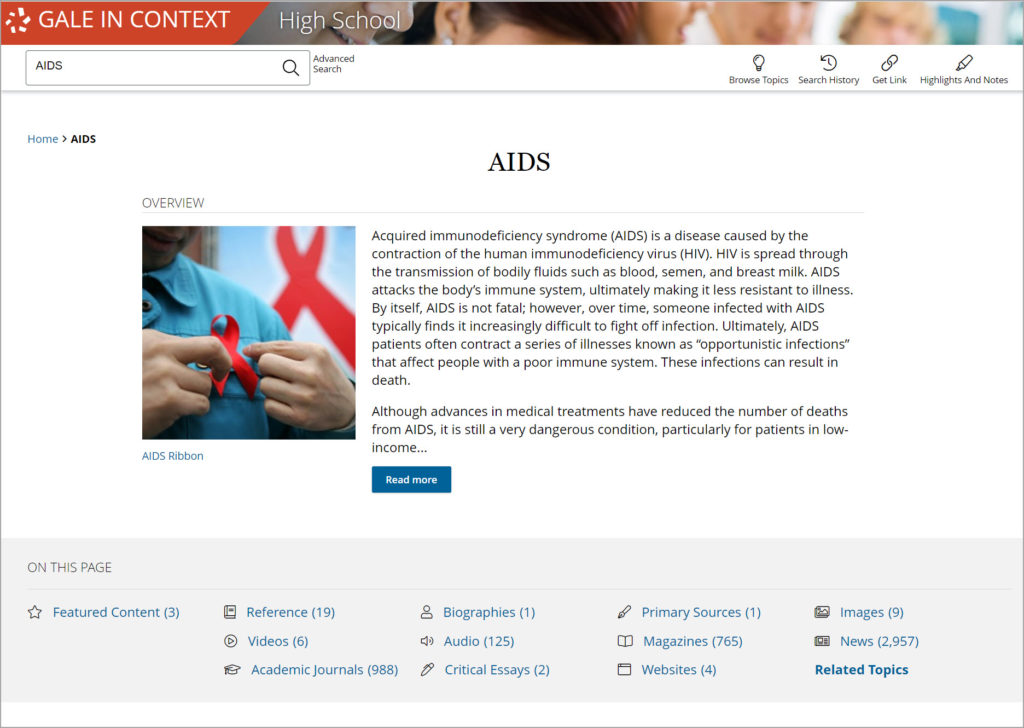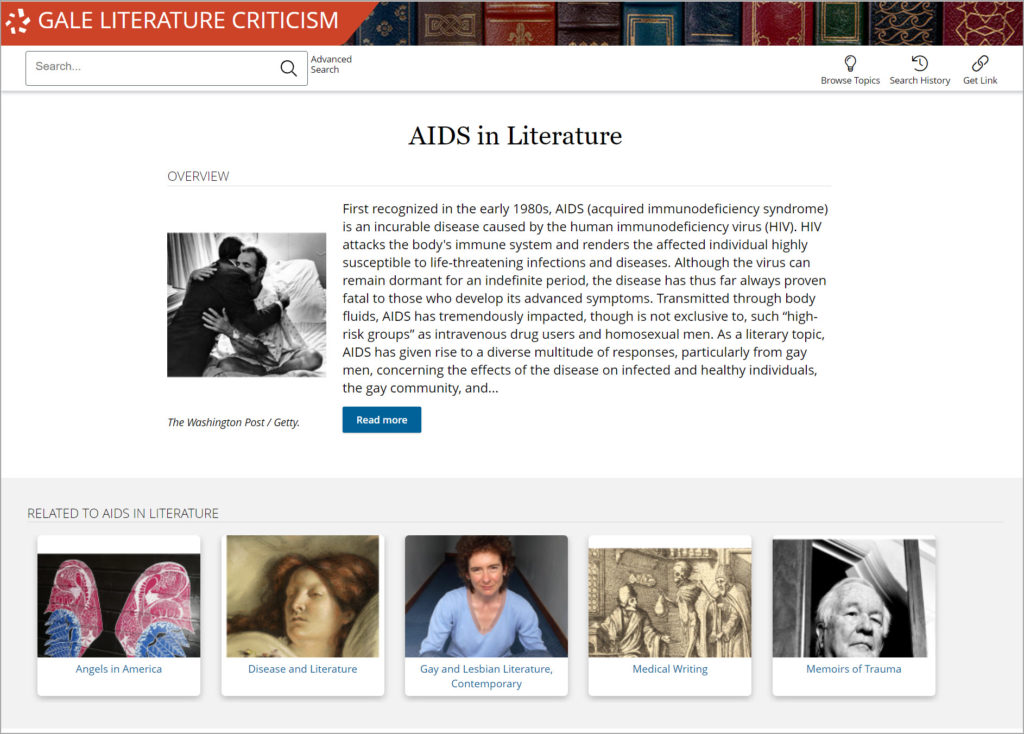| By Gale Staff |
December is AIDS awareness month and there are twelve additional AIDS awareness days throughout the year. Take the opportunity to incorporate valuable learning experiences in your classroom. Promote awareness and support responsible education on what AIDS is and its impact on history.
Discussions about acquired immunodeficiency syndrome (AIDS) can drive lessons in multiple subjects, including health, history, English, social studies, and science.
How to Teach Students About AIDS
Introduce middle and high school students to discussions about AIDS by focusing first on the science of HIV and then on the history of the virus. As the most advanced human immunodeficiency virus (HIV) stage, AIDS is life-threatening because it severely damages the body’s immune system. Connect students to an array of Gale resources that provide overviews of HIV and AIDS, information about viral transmission, the history of the AIDS epidemic, biographies of AIDS activists, and more.
Share Reputable AIDS Resources
Curated for high school students, Gale In Context: High School supports AIDS research with a dedicated subject category linking to topic overviews, primary sources, articles, and more. Give students access to engaging sources and critical-thinking questions designed to help them deepen their understanding of topics like AIDS diagnosis and transmission. Students can also explore biographies in the High School database to research people making a difference in AIDS awareness. For example, Mary Fisher is a heterosexual, non-drug user who contracted HIV from her bisexual ex-husband and gave a powerful speech on AIDS at the 1992 Republican Party national convention.

Gale eBooks on HIV and AIDS can give students more in-depth information on the history of the virus, statistics, and other facts since its first appearance in the late 1970s. Academic researchers can also find 360+ videos covering a multitude of AIDS topics in Gale OneFile, such as the National AIDS Memorial’s latest mini-documentary, “The Black Community and AIDS.”
Encourage Collaborative Thinking
Working in small groups teaches students essential skills like delegation, teamwork, and accountability. Use reputable content from Gale resources to drive group projects and collaborative thinking around AIDS topics.
Assign student groups to learn more about AIDS activists using Gale In Context: Biography. Each group can research a particular activist and present their findings to the rest of the class to create a more engaging learning experience. Choose from key figures like Elizabeth Glaser, who contracted AIDS from blood transfusions—along with her two children—and went on to create the Pediatric AIDS Foundation, or Harvey Fierstein, who started his successful career in acting and writing as a drag queen in New York.
Alternatively, challenge your students to participate in a debate about a topic like “ribbon culture,” starting with an audio broadcast by Alex Cohen. While some say ribbons support awareness of social issues, others say they are overused and make society less compassionate toward a cause. Have your student groups lead a debate for each side, citing resources to support their arguments. To take the lesson a step further, have students interview teachers, staff, or parents about their perspectives on charity ribbons.
Connect Projects Across Curricula
AIDS awareness and education apply to more than one subject. Schools have the opportunity to connect learning activities surrounding AIDS in multiple disciplines during AIDS Awareness Month and throughout the year.
Health: Many stereotypes, myths, and mistruths about AIDS and HIV exist. Encourage your students to research and educate others with the facts. You can assign student groups to create promotional products (posters, videos, photos, etc.) sharing the truth about AIDS using the “Science and Health” reference section from Gale In Context: High School.
English: Introduce your academic students to fictional characters with AIDS in literature. Assign a novel and have students analyze it using Gale Literature Criticism to back up their critiques. Give them access to numerous analyses of contemporary literature, dramas, poetry, and short stories.

History: Teach students about the legal history of AIDS, including discrimination against people with AIDS and HIV. Have them investigate criminal justice and crimes involving AIDS using Gale In Context: U.S. History.
Science: Encourage students to dive deeper into the science of AIDS by studying HIV transmission and the evolution of testing, treatment, and vaccines using Gale In Context: High School.
Tools to Optimize Cross-Curricular Teaching
How can you collaborate with other teachers to bring your students cross-curricular activities supporting AIDS and other topics? Use the digital curricula in Gale In Context: For Educators to create interactive lessons and organize them in unit plans that can be shared with other teachers, students, and librarians.
The Gale In Context platform lets you personalize student learning based on skill level and integrate activities with learning management systems such as Canvas, Moodle, Schoology, G Suite for Education, and Microsoft 365.
Curriculum mapping makes it easier to show exactly how your lessons help students achieve learning outcomes and target skills. Librarians can then support teachers by adding or removing resources that support their classroom goals.
Visit the Gale Support page for platform training and more ideas for using databases in your classroom.
Don’t have access to a resource you need? Contact your rep.

